The alpine regions are home to some of the most resilient and beautiful flowers. These blooms are a testament to nature’s ability to thrive in the most challenging environments. Each flower has adapted to the harsh, cold climates of high altitudes, showcasing delicate petals and vibrant colors. Their beauty is as much a part of the mountains as the peaks themselves. Here are some of the most stunning alpine flowers that have mastered survival in the wild.
Edelweiss
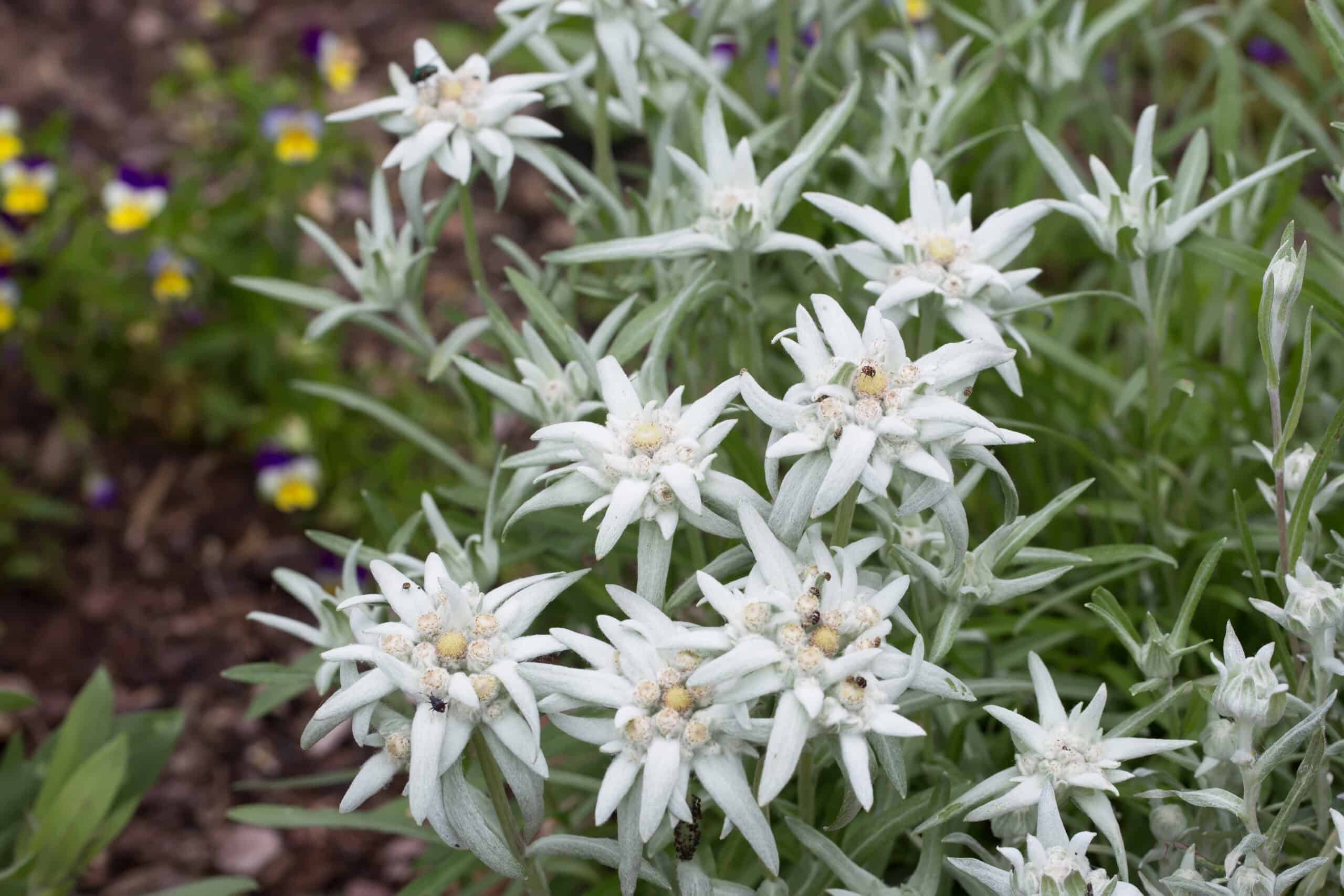
Edelweiss is a symbol of the Alps. Its star-shaped white petals are soft and woolly to the touch, providing insulation. The flower grows in rocky areas at high altitudes, where few other plants can survive. Its thick leaves help it retain moisture in dry, windy conditions. Often seen on steep cliffs, Edelweiss has become an emblem of alpine culture and tradition.
Alpine Aster
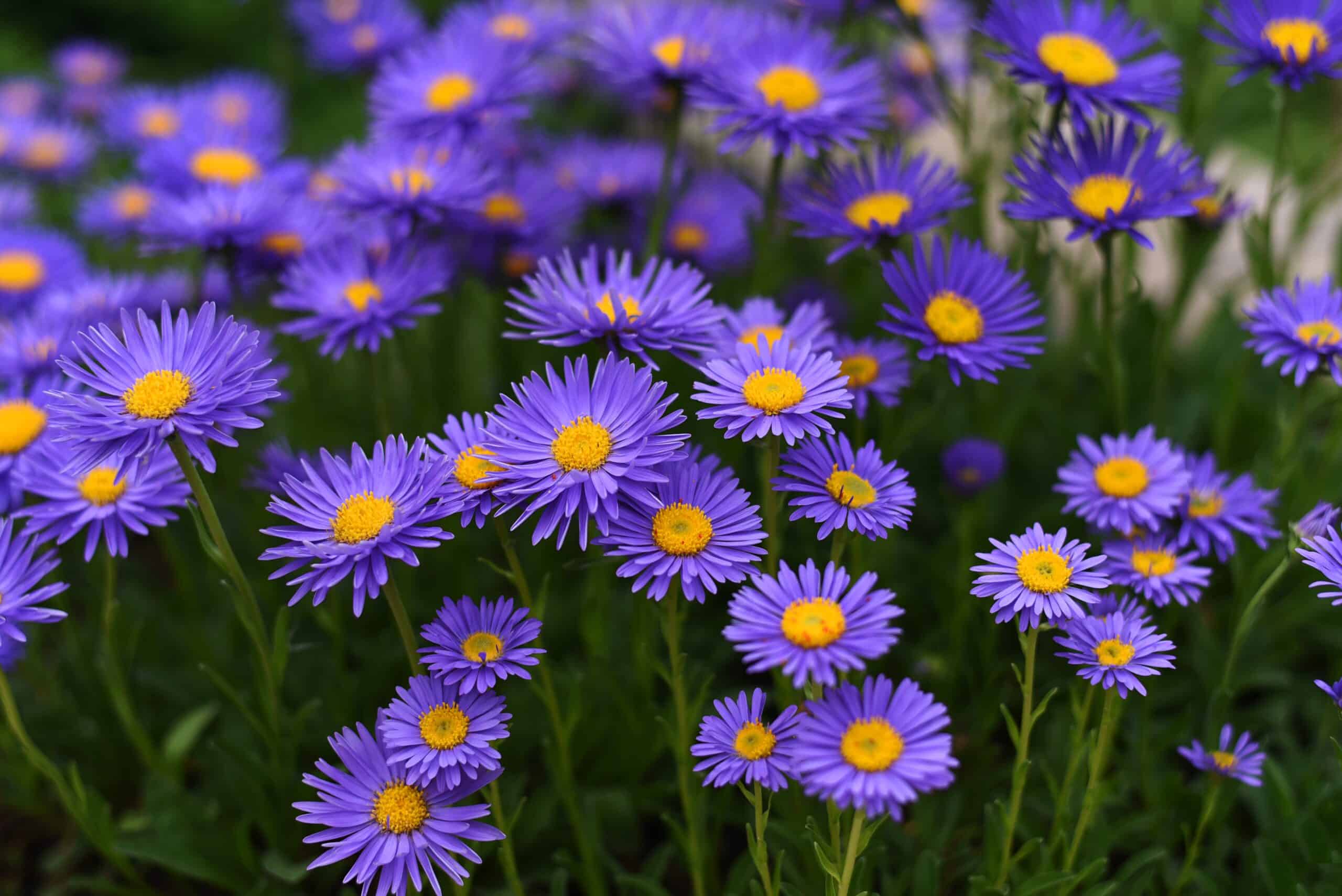
The Alpine Aster is known for its bright purple petals and vibrant yellow centers. This flower thrives in the cool, rocky terrain of the mountains. It blooms in late summer, adding a striking splash of color to the alpine meadows. The plant is small but hardy, withstanding strong winds and freezing temperatures. Its daisy-like appearance makes it a favorite among hikers, who often spot it along trails.
Glacier Lily
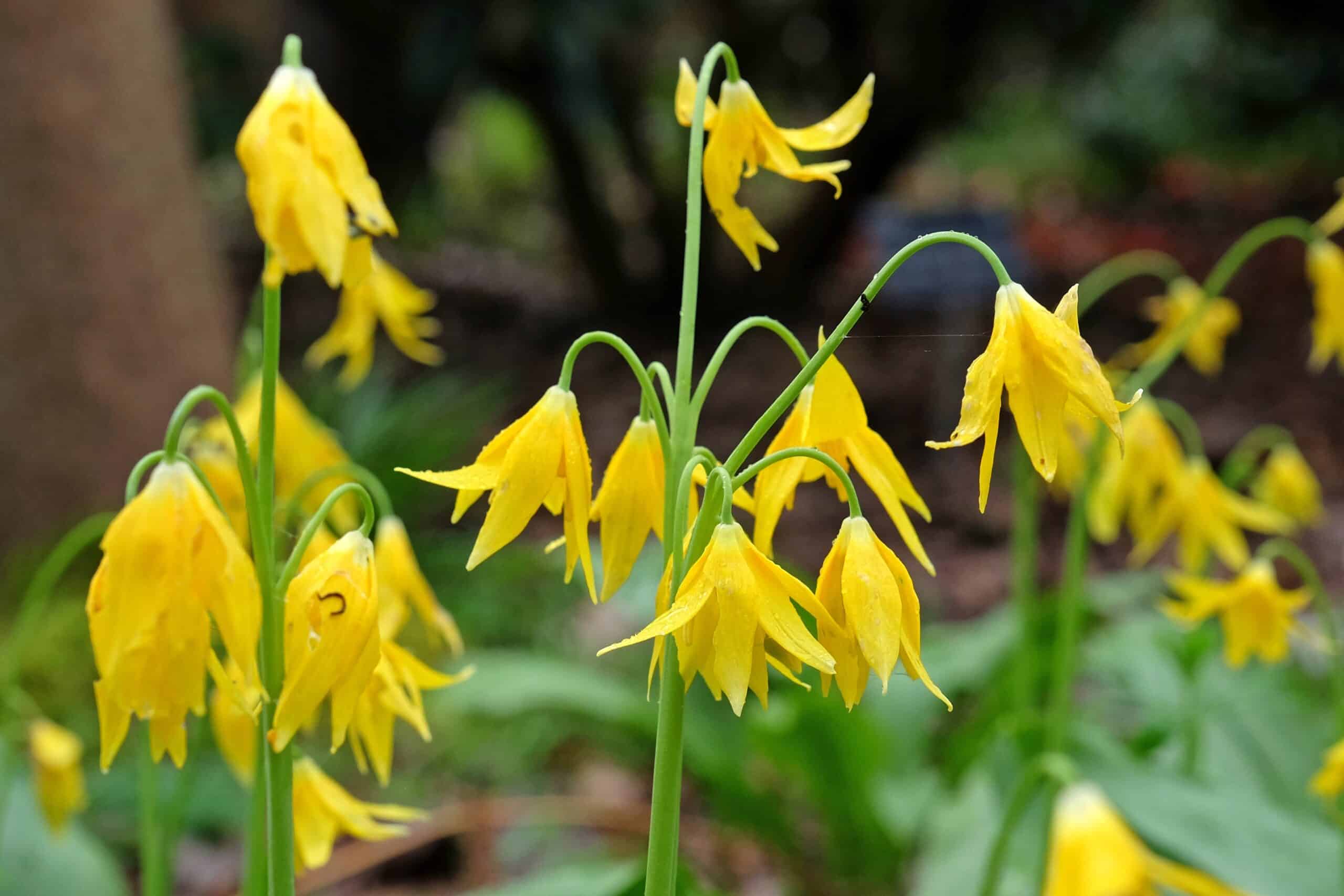
Glacier Lily is a vibrant yellow flower that emerges as the snow melts in spring. It grows in the moist, cool soils of alpine regions, often in clusters. The flower’s petals are pointed, and they typically nod downward. This lily is one of the first signs of spring in the mountains, brightening the landscape. It also provides an essential food source for wildlife after the long, harsh winter.
Alpine Forget-Me-Not
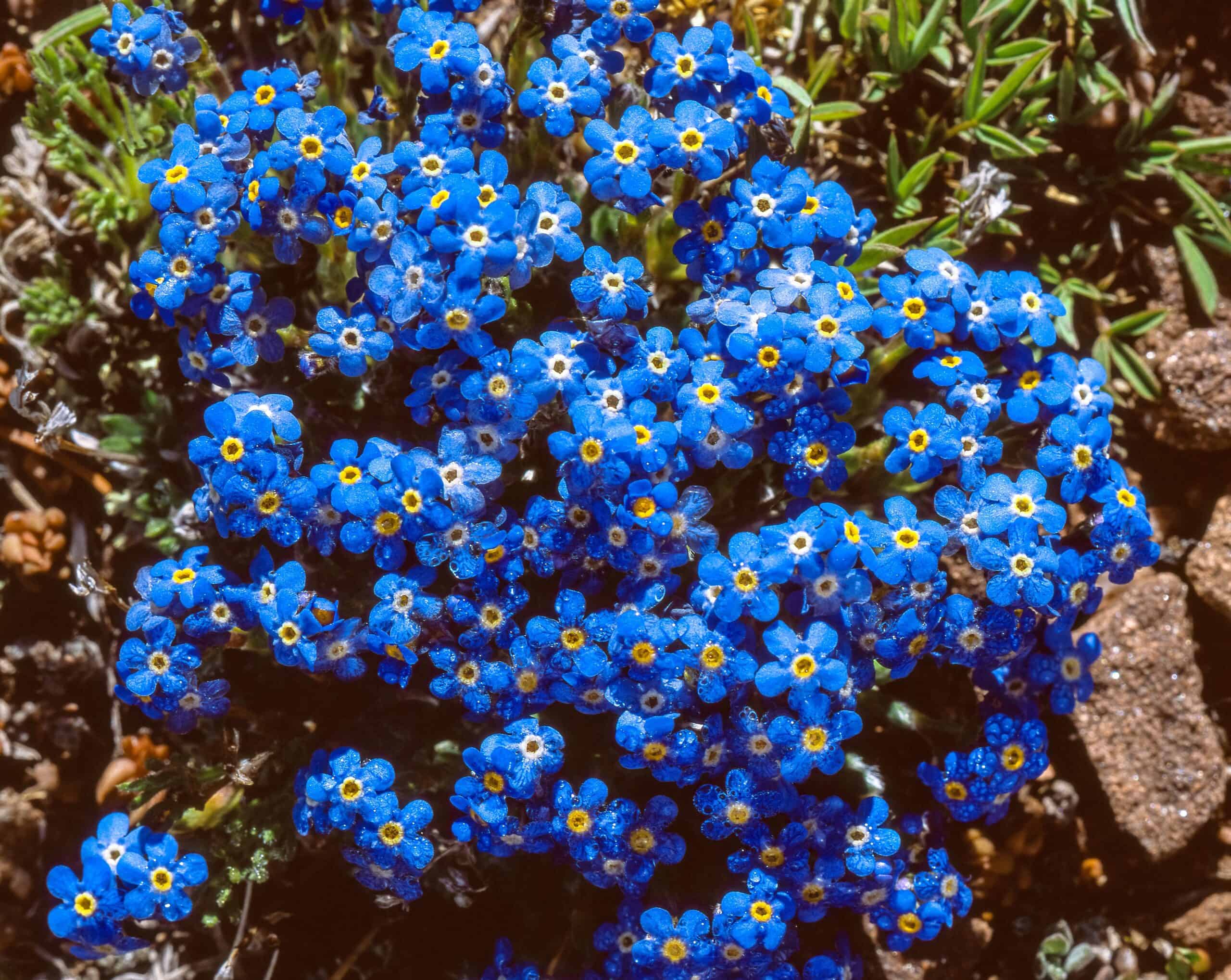
The Alpine Forget-Me-Not is a tiny, bright blue flower with a yellow center. It grows in clusters, often in rocky, well-drained soils. This flower thrives in the harsh conditions of high altitudes, standing out against the barren alpine landscape. Despite its delicate appearance, it is incredibly resilient to cold temperatures and can survive late-season frosts. Its vibrant color makes it a striking addition to the alpine flora.
Spring Gentian
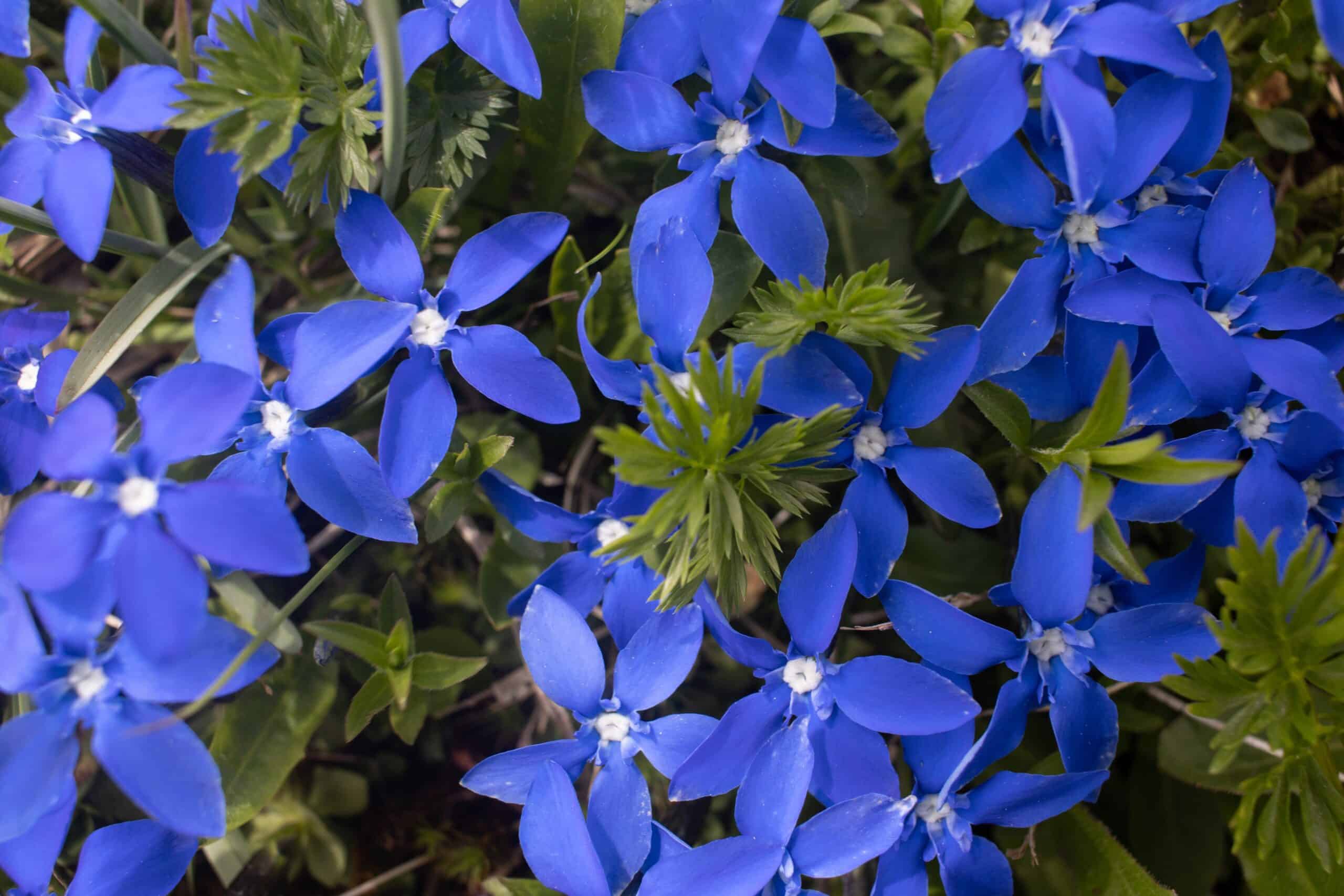
Spring Gentian is a small but striking flower with deep blue petals. It often grows in grassy alpine meadows, preferring sunny spots. The flower’s vivid color contrasts beautifully with the surrounding greenery, making it stand out. It blooms in early spring, bringing life and color to the cold, mountainous regions. This gentian is a favorite for its intense hue and compact size, which is perfect for withstanding alpine winds.
Arctic Poppy
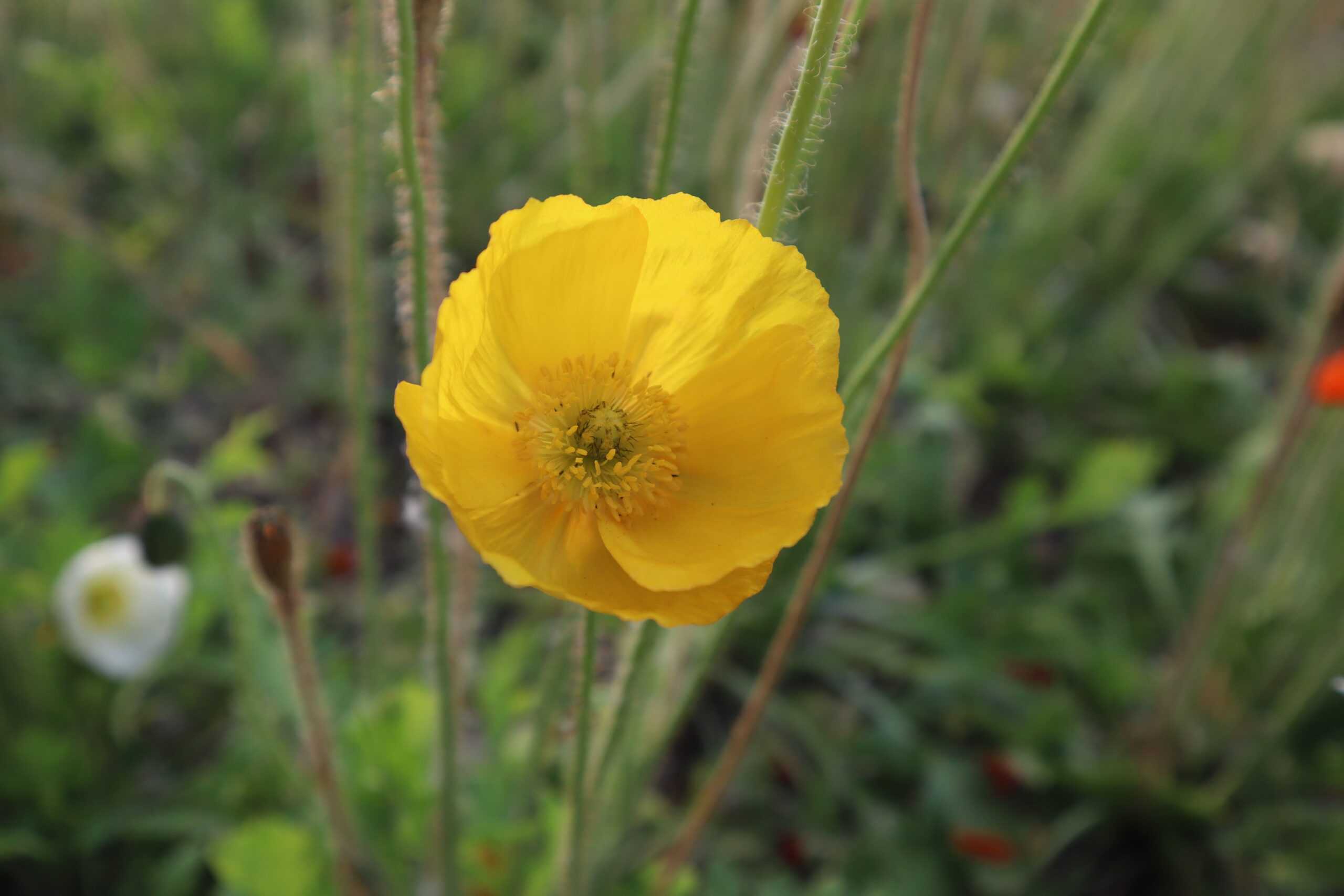
The Arctic Poppy has delicate yellow petals that form a cup shape, ideal for capturing sunlight. It grows in the stony, nutrient-poor soils of high altitudes. This flower is uniquely adapted to withstand cold, dry conditions, often thriving where few other plants can survive. It blooms in areas exposed to harsh winds, showcasing its resilience. The Arctic Poppy’s bright color is a cheerful and unexpected sight in the severe alpine environment.
Mountain Avens
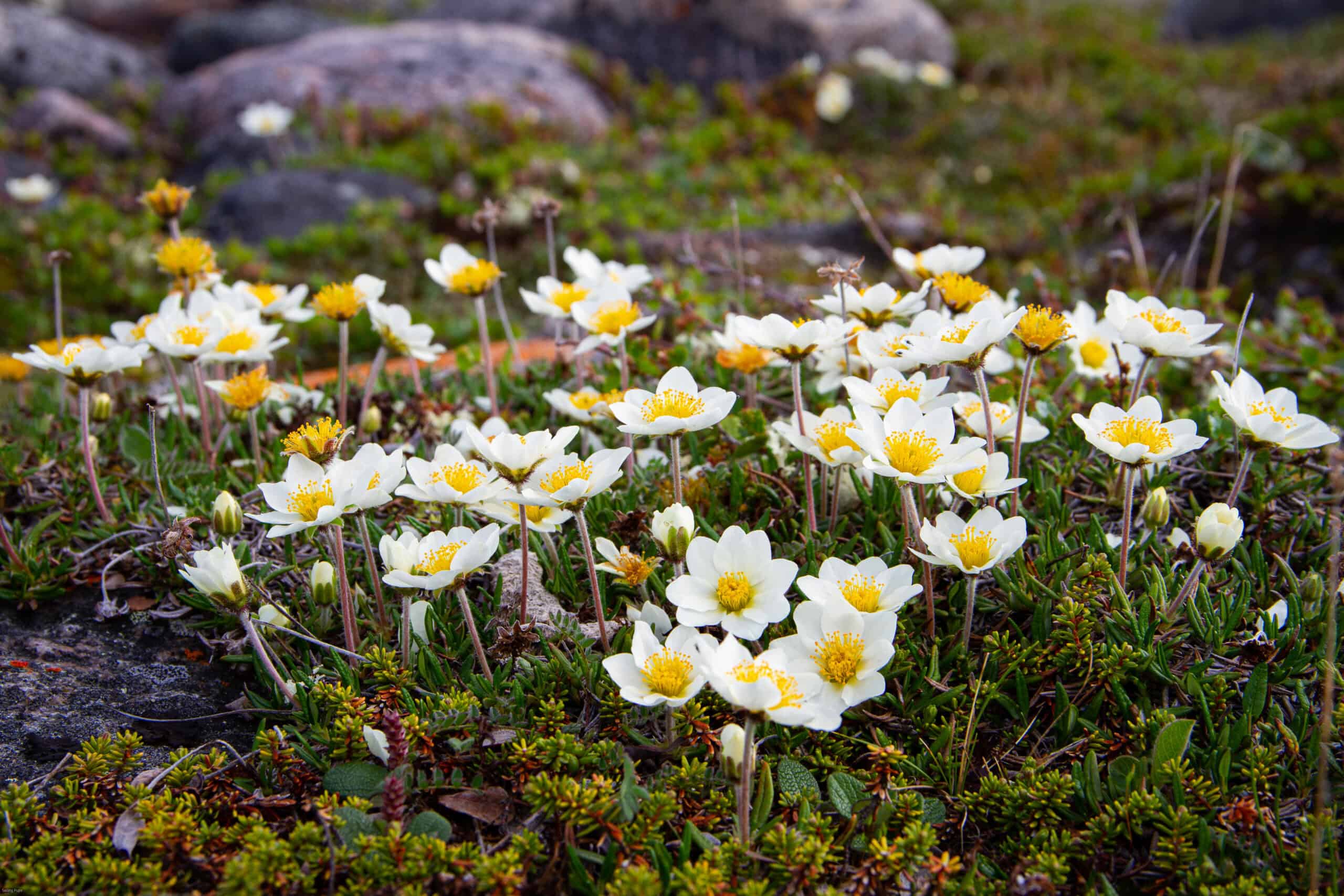
Mountain Avens is a low-growing plant with white, daisy-like flowers and leathery leaves. It prefers rocky, limestone-rich soils and can form dense mats. The flower has eight petals that surround a bright yellow center, which attracts pollinators. This hardy plant blooms in late spring, covering the alpine slopes with patches of white. Its thick leaves protect it from the cold and help it conserve moisture in the dry alpine air.
Pasque Flower
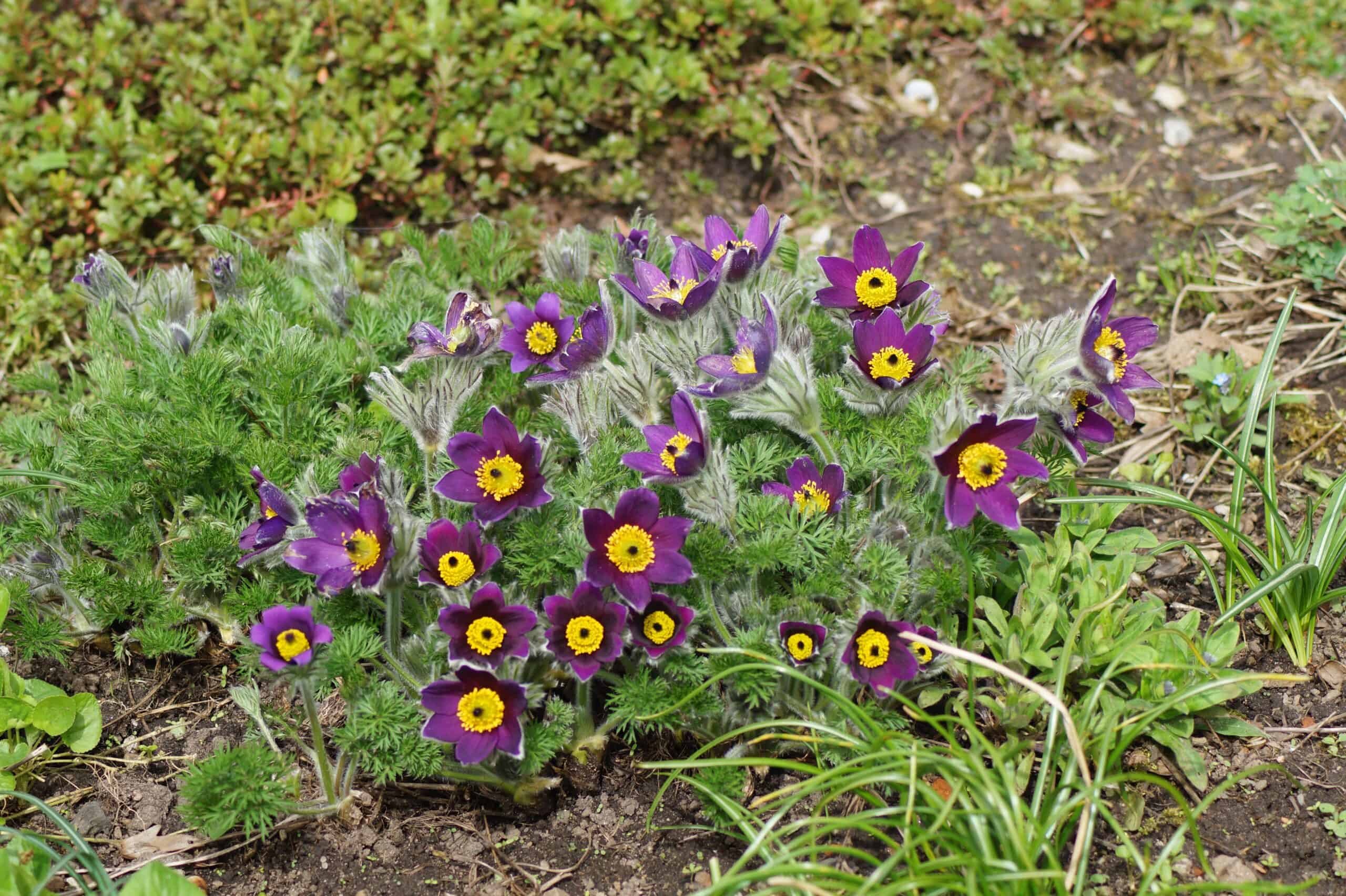
Pasque Flower is known for its soft, purple petals and bright yellow centers. It blooms early in the spring, often pushing through the snow. The flower is covered in fine hairs, giving it a silvery appearance that helps retain warmth. This adaptation allows it to survive the cold alpine air and early frosts. Its early bloom makes it a symbol of spring’s arrival in the mountains, often one of the first flowers to emerge.
Snowbell
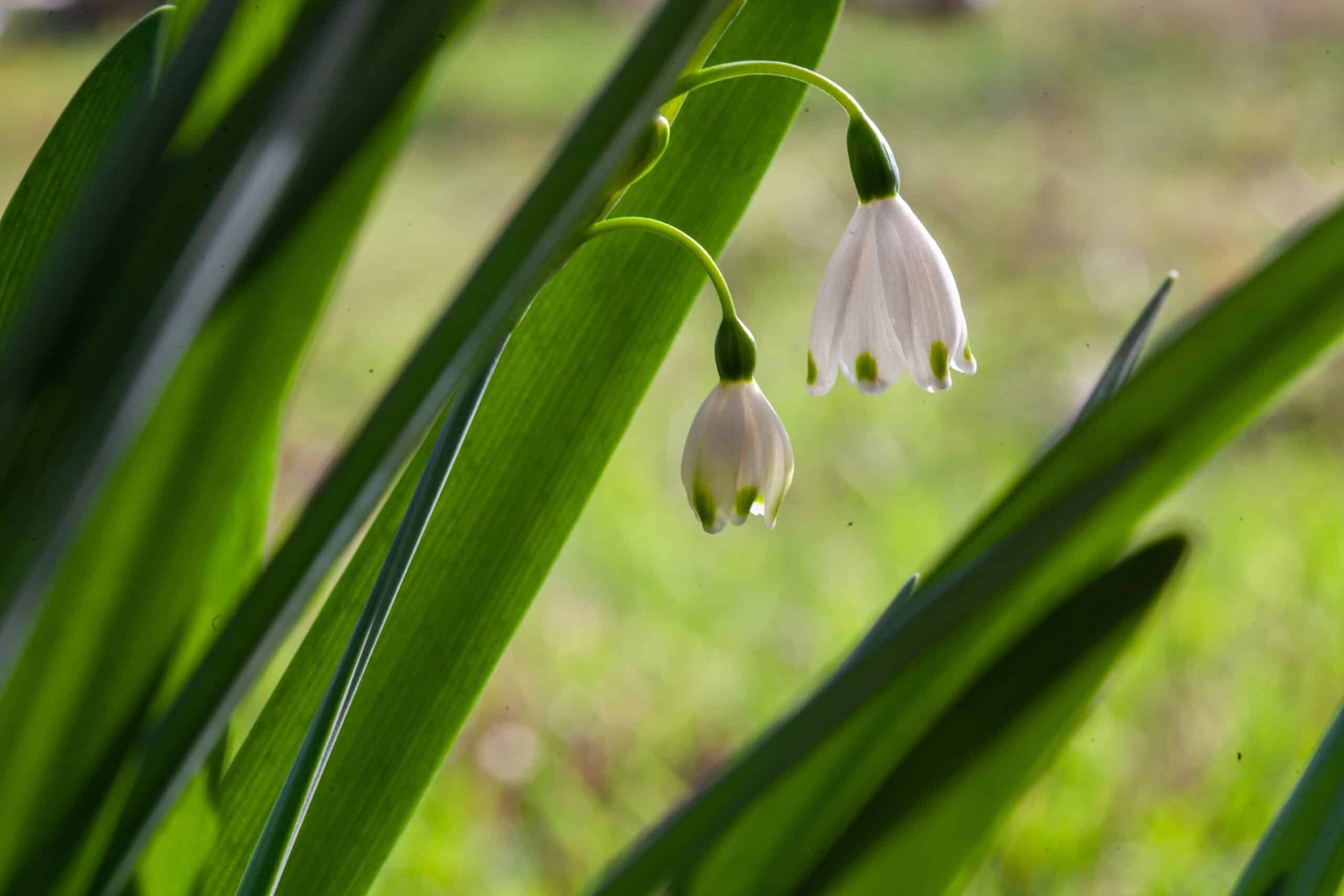
Snowbell is a small, bell-shaped flower that grows in clusters, often in sheltered crevices. Its white petals have a delicate, waxy texture that helps reduce water loss. This flower thrives in rocky environments where it is protected from the wind. Snowbell blooms in late summer, adding a touch of elegance to the alpine landscape. Its delicate appearance contrasts with its tough nature, as it can endure harsh conditions and still thrive.
Moss Campion
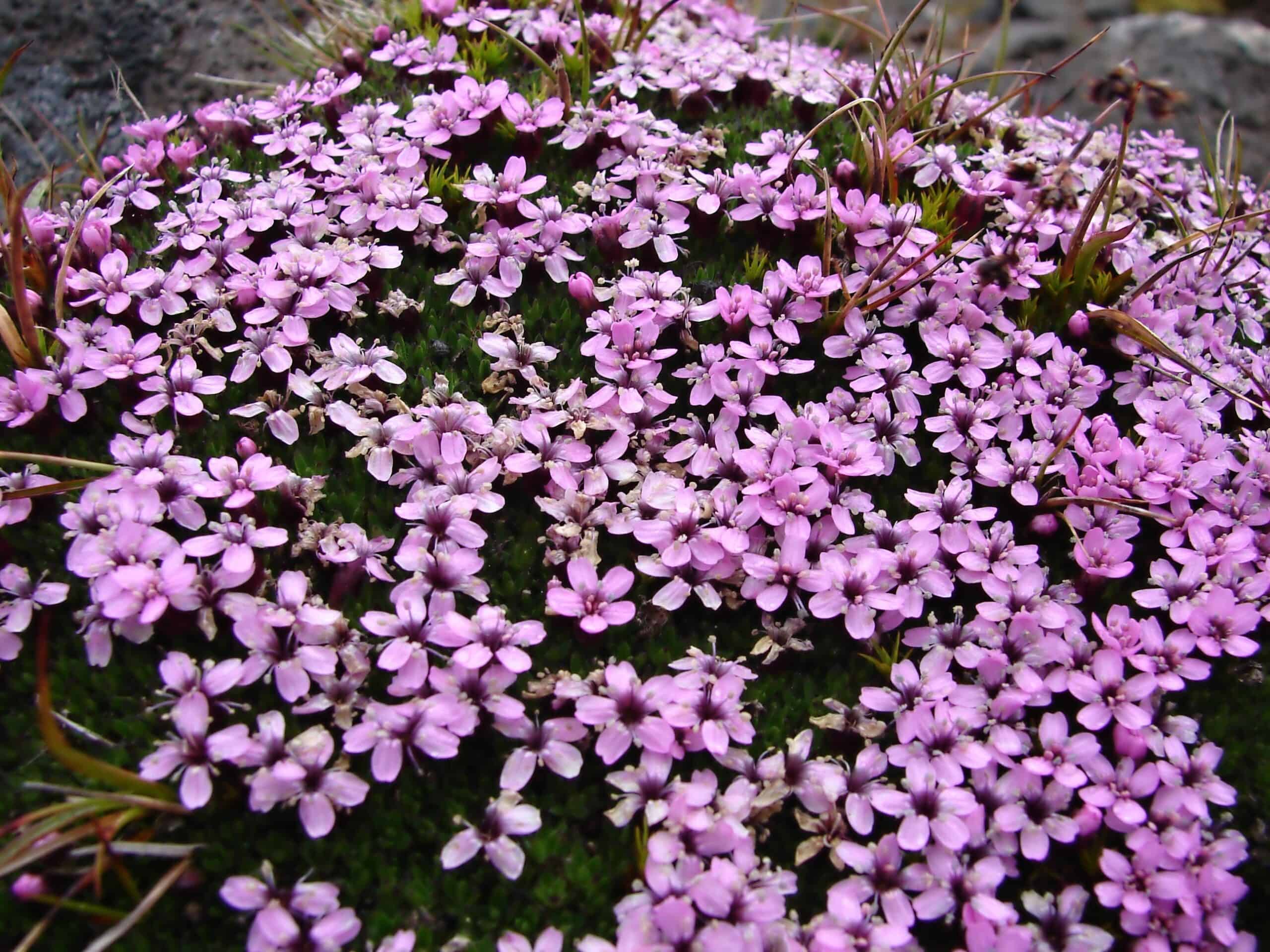
Moss Campion is a low-growing plant that forms dense, cushion-like mats. It has small, pink or purple flowers that dot the surface like tiny jewels. This flower thrives in the rocky, well-drained soils of high altitudes. The plant’s compact growth helps it conserve moisture and resist cold winds. Moss Campion is often one of the first plants to colonize barren alpine areas, showing incredible resilience.
Rock Jasmine

Rock Jasmine is a tiny, ground-hugging plant with delicate white or pale pink flowers. It grows in crevices and rocky slopes, where it finds protection from the elements. The flowers are small but numerous, creating a carpet of color in the alpine meadows. This plant is well-adapted to the cold and dry conditions of high altitudes. Its roots anchor it firmly in the soil, preventing erosion on steep slopes.
Yellow Saxifrage
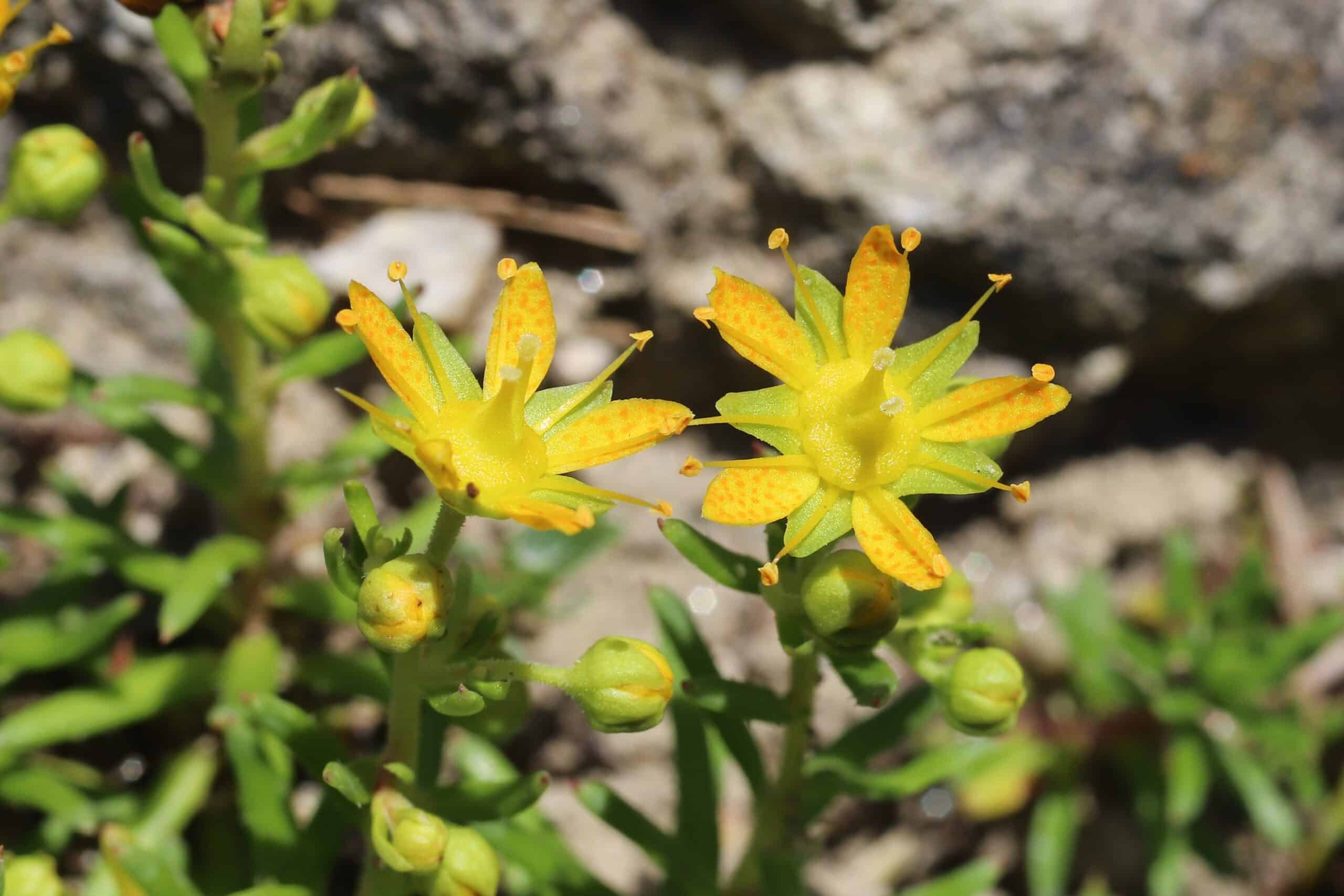
Yellow Saxifrage is a hardy alpine plant with bright yellow, star-shaped flowers. It grows in rocky, limestone-rich areas, often in cracks and crevices. The plant has fleshy leaves that store water, helping it survive in dry conditions. Its flowers bloom in clusters, adding a splash of color to the rocky landscape. Yellow Saxifrage is a symbol of endurance, thriving where few other plants can survive.
Mountain Harebell
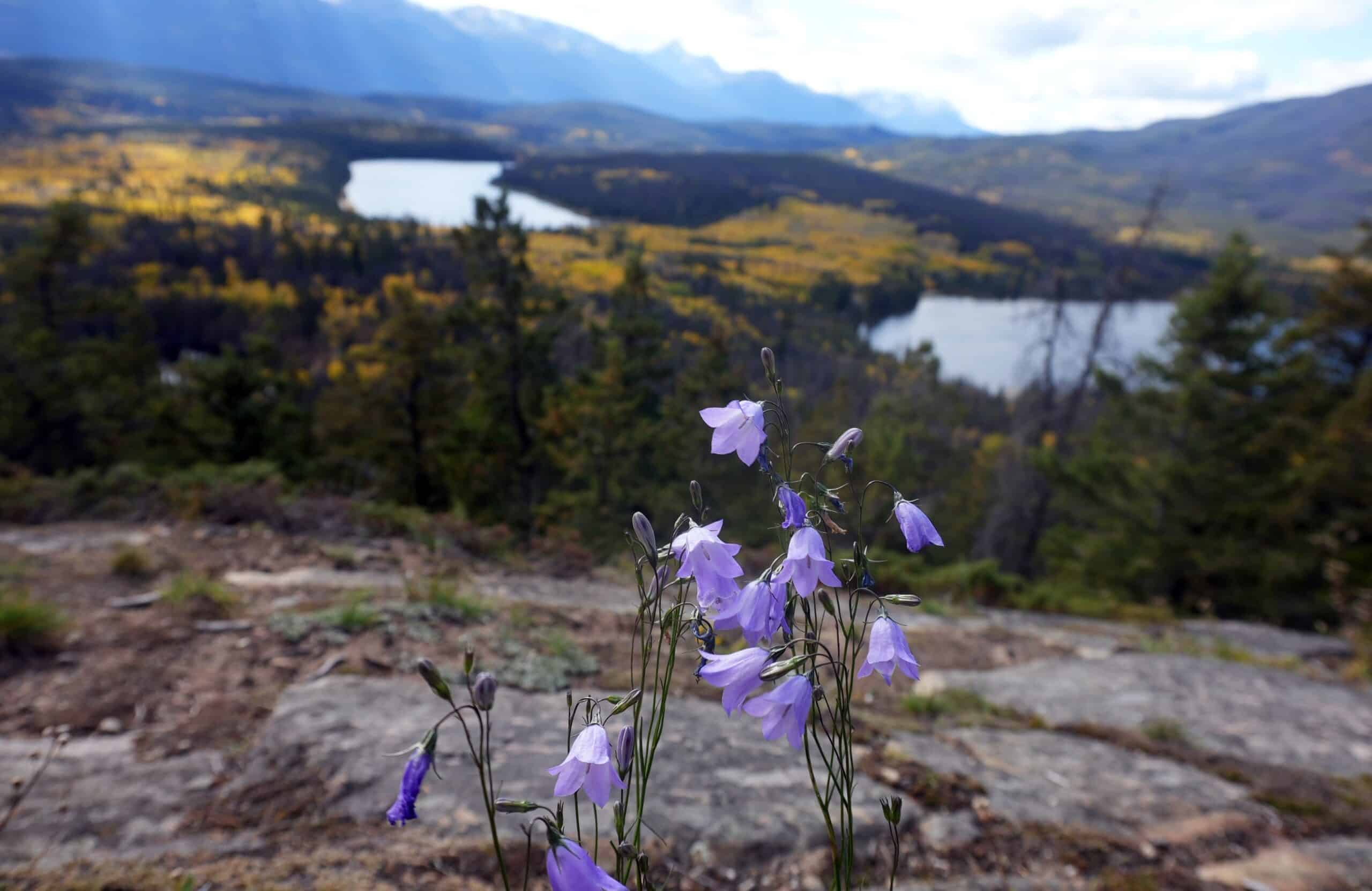
Mountain Harebell is a delicate flower with bell-shaped, pale blue petals. It grows in grassy meadows and rocky slopes, often at high altitudes. The plant’s slender stems sway gracefully in the alpine breeze. Despite its fragile appearance, Mountain Harebell is tough and resilient. It blooms throughout the summer, adding a touch of elegance to the rugged mountain landscape.
Silky Phacelia
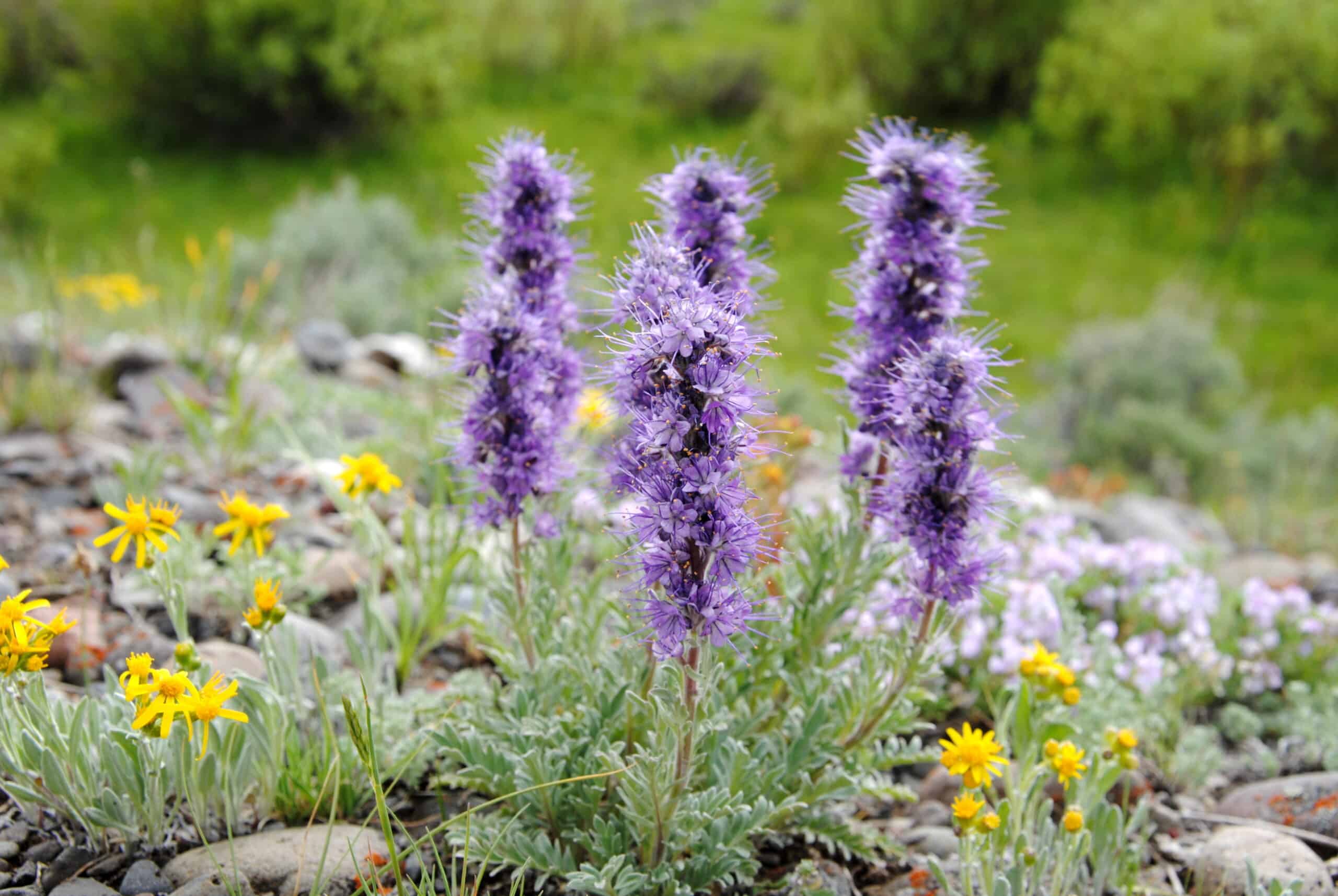
Silky Phacelia is a unique alpine flower with delicate, pale lavender petals. The plant has fine, silvery hairs that give it a soft, velvety texture. It grows in dry, rocky areas, often on steep slopes. The flowers are small but numerous, forming clusters that add color to the alpine landscape. Silky Phacelia is well-adapted to the harsh conditions of high altitudes, thriving where other plants struggle.
Blue Gentian
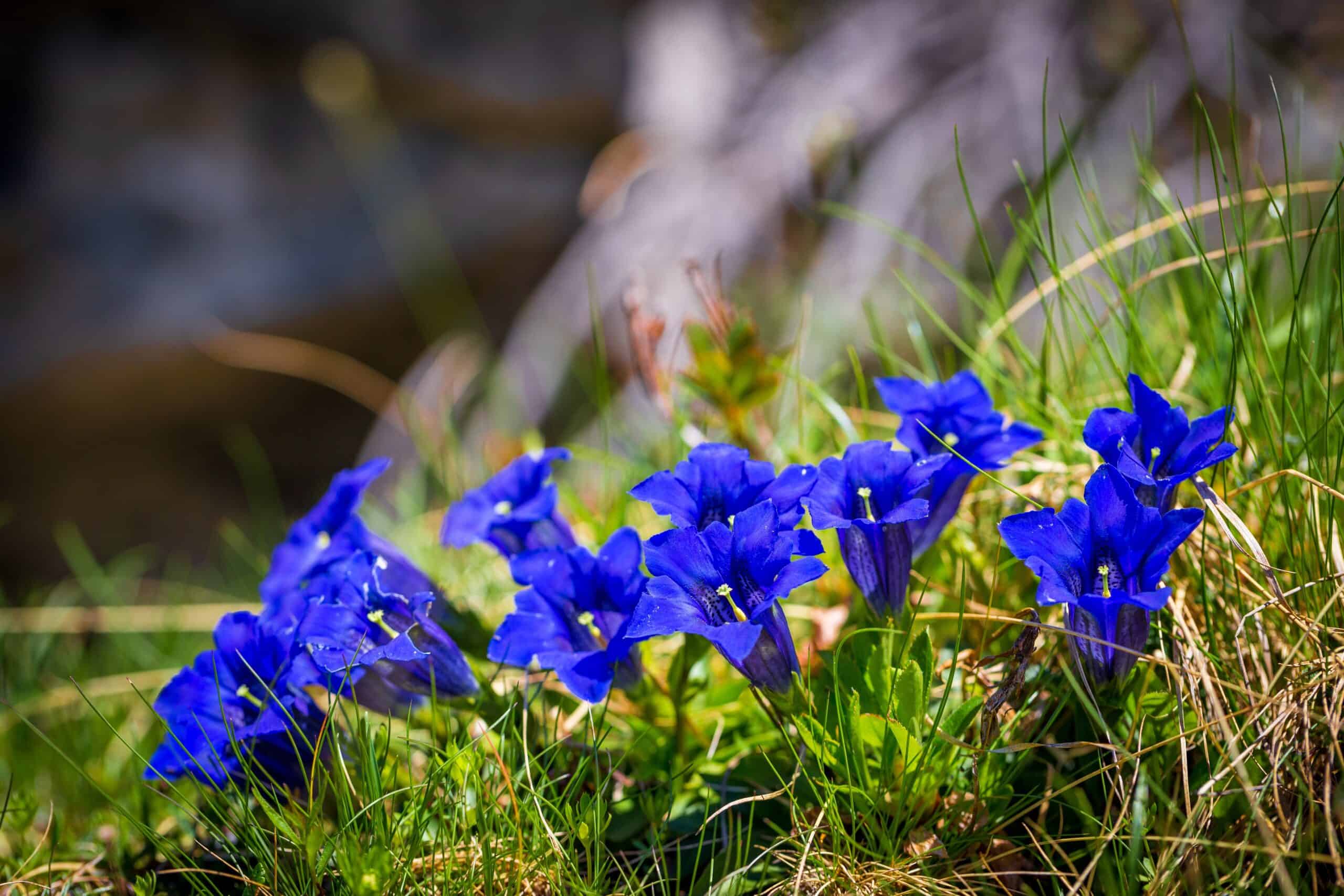
Blue Gentian is one of the most famous alpine flowers, known for its deep blue, trumpet-shaped petals. It grows in the grassy meadows and rocky slopes of the Alps. The plant’s vivid color contrasts beautifully with the green landscape, making it highly sought after by gardeners and hikers alike. Blue Gentian blooms in late spring and early summer, signaling the start of the alpine flowering season. Its ability to thrive in cold, harsh climates makes it a true symbol of alpine beauty.
This article originally appeared on Rarest.org.
More from Rarest.org
13 Leading Advertising Agencies with High-Profit Margins

In the fast-paced world of advertising, certain agencies stand out not just for their creativity but also for their ability to generate impressive profit margins. Read More.
14 Rarely Heard Folktales and Legends

Folktales and legends have been passed down through generations, weaving together the cultural fabric of communities around the world. Read More.
15 Amphibians Revived Through Conservation Efforts

Conservation efforts have played a vital role in reviving many amphibian species that were once on the brink of extinction. Read More.
